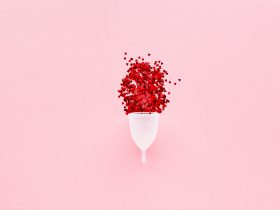Hair loss can result from various factors, including genetics, hormonal changes, medical conditions, medications, and stress.
Understanding the hair growth cycle, which consists of the growth (anagen), transitional (catagen), and resting (telogen) phases, can help identify abnormalities in hair loss patterns.
While losing 50-100 hairs per day is normal, excessive hair shedding or changes in hair texture and thickness may indicate an underlying issue that warrants attention from a healthcare professional.
Aging can contribute to changes in the hair growth cycle, but it is rarely the sole cause of significant hair loss.
Let’s talk about the most common 7 reasons why women experience hair loss.
- Genetics
Female pattern hair loss, also known as androgenetic alopecia, is the most prevalent cause of hair loss among women.
It is primarily a hereditary condition influenced by both genetic and hormonal factors. Individuals affected by this condition inherit genes that render their hair follicles more susceptible to the effects of androgens, which are hormones responsible for regulating hair growth.
Specifically, dihydrotestosterone (DHT), a potent form of testosterone, can bind to androgen receptors located in the hair follicles, initiating a gradual shrinking process of these follicles over time.
As a consequence of this follicular miniaturization, the affected hair becomes finer and shorter with each successive growth cycle. This ultimately leads to a reduction in hair density, characterized by fewer strands per square inch of the scalp.
Additionally, the duration of the growth phase of the hair follicles shortens, resulting in both increased shedding and reduced hair length with each cycle.
While androgens, particularly DHT, play a significant role in driving female pattern hair loss, researchers acknowledge that other factors may also contribute to the condition’s development and progression.
Despite the predominant role of androgens, the exact mechanisms underlying female pattern baldness are still being elucidated. Studies have revealed that hair loss in women can occur even when androgen levels are within normal ranges, suggesting the involvement of additional, as-yet-undiscovered factors.
Consequently, female pattern hair loss may involve a complex interplay of genetic predisposition, hormonal influences, and potentially other environmental or physiological factors.
The characteristic signs of female pattern hair loss typically manifest gradually over time. Initially, individuals may notice a widening of the part line on their scalp. As the condition progresses, the thinning of hair becomes more widespread, although the hairline along the forehead usually remains relatively unaffected.
This pattern of hair loss distinguishes female pattern alopecia from other forms of hair loss and serves as a hallmark feature of the condition.
- Hormonal Imbalances
Hormonal imbalances, particularly those involving high or fluctuating levels of androgens, can contribute to hair loss in women. Conditions such as polycystic ovary syndrome (PCOS) and perimenopause are known for their association with hormonal disruptions that affect hair growth.
PCOS, a hormonal disorder that disrupts ovulation, often leads to elevated levels of androgens like DHT, which can cause hair follicles to shrink and result in thinner, more brittle hair. This shrinkage of follicles is a common consequence of elevated androgen levels in individuals with PCOS.
Similarly, during perimenopause, the transitional phase before menopause, hormonal fluctuations can disturb the hair growth cycle. As estrogen levels decrease and androgen levels remain relatively stable, the dominance of androgens can lead to hair thinning. This shift in hormonal balance can result in hair loss similar to that seen in androgenetic alopecia.
Symptoms of hair loss due to hormonal imbalances typically include thinning hair along the top and sides of the scalp, a widening part, and strands that become finer and more prone to breakage. These changes are indicative of the effects of hormonal fluctuations on the hair growth cycle.
- Stress
Intense stress can lead to a type of hair loss known as telogen effluvium, which is why it is very important to try your best to relieve stress. This condition can be triggered by various stressors, including both physical and emotional stress.
Examples of physical stressors may include childbirth, major surgery, or severe illness, while emotional stressors could involve significant life events such as job loss or the loss of a loved one. When the body experiences intense stress, it may prioritize resources towards coping with the stressor, resulting in a temporary interruption in the hair growth cycle.
During telogen effluvium, a large number of hair follicles simultaneously enter the resting phase of the hair growth cycle. This pause in growth typically lasts for three to six months.
Once the body perceives that the stress has subsided and the growth phase resumes, the hairs that were in the resting phase transition into the shedding phase. This leads to increased hair shedding, although the hair loss is usually temporary and reversible.
Various stressors can trigger telogen effluvium, including high fever, severe infections, rapid weight loss, and discontinuation of certain medications like beta-blockers, antidepressants, or birth control pills. Additionally, nutritional deficiencies, such as insufficient levels of iron, vitamin D, biotin, or zinc, can also contribute to disruptions in the hair growth cycle.
Symptoms of telogen effluvium typically include generalized thinning of the hair rather than specific bald patches.
Excessive shedding is commonly observed, with individuals noticing increased amounts of hair in their brushes, shower drains, and on their pillows. It’s important to note that there is often a delay of approximately three months between the stressful event and the onset of noticeable hair shedding.
- Styling With Heat And Chemicals
Regularly subjecting your hair to harsh styling practices such as heat styling or chemical treatments can lead to various issues, including a hair shaft disorder known as trichorrhexis nodosa. This condition is characterized by weakened points in the hair shaft, making strands prone to breaking easily.
According to doctors, underlying factors such as nutritional deficiencies and genetic predispositions may contribute to the development of trichorrhexis nodosa. Conditions like iron deficiency anemia, hypothyroidism, and trichothiodystrophy, an inherited disorder causing brittle hair and skin problems, can exacerbate this condition.
However, any styling routine involving excessive heat and harsh chemicals, such as using curling irons, flat irons, frequent perms, chemical straightening treatments, or relaxers can damage the hair follicles and potentially result in permanent hair loss.
Signs of trichorrhexis nodosa often include a combination of hair loss and changes in texture. Affected hair may appear frayed, with small bead-like nodes along the strands, and feel brittle to the touch.
Additionally, individuals may notice increased breakage and shorter, uneven strands. In severe cases, patches of thinning or an overall reduction in hair density may also occur.
- Folliculitis
Folliculitis is a skin condition characterized by inflammation of hair follicles, which can occur due to various factors such as physical irritation (e.g., shaving, traction, wearing wigs) or infection (bacterial, fungal).
This inflammation compromises the integrity of the follicles, leading to potential disruptions in the normal hair growth cycle.
There are two main types of folliculitis: superficial and deep. Superficial folliculitis affects only part of the hair follicle and typically resolves within a few days. On the other hand, deep folliculitis involves the entire follicle and tends to be more severe and long-lasting.
Symptoms of folliculitis typically include small acne-like bumps or pustules around the affected hair follicles. These lesions may be accompanied by itching, tenderness, or pain, and in some instances, they may cluster together, resembling a rash.
Moreover, as the condition progresses, the surrounding skin may become irritated and exhibit changes in color, appearing darker, lighter, or redder.
- Traction Alopecia
Sporting tight hairstyles regularly can lead to a specific type of hair loss known as traction alopecia. This condition occurs when there is constant tension or pulling on the hair follicles due to tightly pulled-back hairstyles like buns, ponytails, cornrows, or hair extensions.
The American Academy of Dermatology (AAD) highlights that these hairstyles can exert significant pressure on the scalp, leading to damage and inflammation around the hair follicles.
The persistent tension from these hairstyles disrupts the normal hair growth cycle. Over time, this can weaken the follicles, causing them to become damaged and eventually leading to hair loss. If left untreated, this hair loss can become permanent.
One of the most noticeable signs of traction alopecia is thinning hair along the frontal hairline or sides of the scalp, where the tension from hairstyles is typically most concentrated. This may manifest as a widening of the part or a receding hairline.
Additionally, individuals may observe short, broken hairs along the affected areas, indicating damage to the follicles.
For individuals who prefer hair extensions, the indicators of traction alopecia may be more prominent on the back of the scalp, as this is where the extensions are typically attached.
It’s essential to be mindful of hairstyle choices and avoid styles that cause excessive tension on the hair follicles to prevent traction alopecia and maintain healthy hair growth.
- Seborrheic Dermatitis
Severe dandruff, or seborrheic dermatitis, is a bothersome skin condition characterized by a rash that may appear darker, lighter, or redder than the surrounding skin.
In addition, it presents with itchy and flaky patches that predominantly affect areas with numerous oil glands, such as the scalp. Driven by an inflammatory response against organisms like Malassezia yeast colonies that inhabit the scalp, this condition can lead to various issues.
The combination of flaky patches and scalp oil can clog hair follicles, hindering the delivery of nutrients to the hair and weakening its structure.
Continuous scratching due to itching exacerbates the damage and may result in increased shedding. Moreover, the inflammatory response disrupts the normal hair growth cycle, potentially triggering telogen effluvium. In this condition, hair follicles enter a resting phase for an extended period before shedding in bulk.
What you’ll probably notice with severe dandruff-related hair loss is not necessarily significant balding but rather a gradual reduction in hair density, especially in areas affected by seborrheic dermatitis.
The hair may also become finer and more fragile due to the inflammatory processes interfering with the growth cycle.
When Is It Time To See a Dermatologist
If you’re experiencing hair loss, it’s important to know when to seek help from a dermatologist. While some cases of excessive shedding, known as telogen effluvium, may resolve on their own within about six months, certain signs indicate it’s time to see a dermatologist.
If your hair doesn’t return to its normal fullness within the expected time frame or if you notice specific signs such as widening of your part, bald spots, or thinning along your hairline or crown, it’s advisable to schedule an appointment with a dermatologist.
Also, if you experience accompanying symptoms like itching, pain, burning, flaking, or discolored rashes, seeking help sooner rather than later is recommended.
During your consultation, the dermatologist will examine your hair closely and discuss your medical and family histories to understand the underlying causes of your hair loss. They may also order laboratory tests, such as blood tests and a metabolic panel, to identify any medical conditions contributing to the hair loss.
Once the root cause of the problem is identified, the dermatologist can work with you to develop a personalized hair loss treatment plan to address the underlying issues and promote hair growth.
















Find Us on Socials